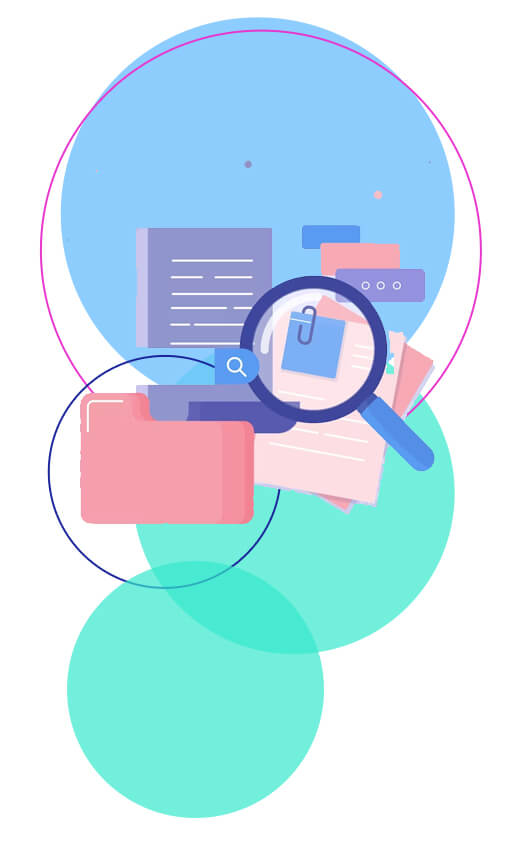Paper Translator - Free Tool to Translate Paper Online
World’s Best AI Powered Translator At Your Service

World’s Best AI Powered Translator At Your Service

Leading organizations around the world trust Doc Translator


DocTranslator is a free online tool that allows you to translate documents from one language to another. Here’s a step-by-step guide on how to use DocTranslator for paper translation:
1. Access DocTranslator:
– Open your web browser and go to the DocTranslator website (https://dashboard.doctranslator.com/register).
2. Upload Your Document:
– Click on the “Choose file” button or drag and drop your paper document onto the webpage. DocTranslator supports various document formats, including PDF, DOC, DOCX, ODT, and TXT.
3. Select Source and Target Languages:
– In the dropdown menus provided, select the source language of your document (the language it’s currently in) and the target language (the language you want to translate it into).
4. Optional Settings (if needed):
– DocTranslator offers some additional settings you can customize, such as specifying whether the document contains sensitive content or preserving the document’s layout. Adjust these settings according to your preferences.
5. Start Translation:
– Click the “Translate” button to begin the translation process. DocTranslator will use its translation engine to convert the text from the source language to the target language.
6. Wait for Translation:
– The time it takes for the translation to complete may vary depending on the length and complexity of your document. DocTranslator will display a progress bar, and you can wait until the translation is finished.
7. Download the Translated Document:
– Once the translation is complete, DocTranslator will provide a link to download the translated document. Click on the link to save the translated paper to your device.
8. Review and Edit (if necessary):
– After downloading the translated document, it’s a good practice to review it for accuracy. Automated translation tools can have limitations, and you may need to make manual corrections or adjustments to ensure the quality of the translation.
Please keep in mind that while automated translation tools like DocTranslator can be helpful, they may not always provide perfect translations, especially for complex or nuanced content. It’s a good idea to double-check and refine the translation as necessary, especially for important documents or academic papers.
Paper language translator services have revolutionized the way we break down language barriers and facilitate global communication. These services employ cutting-edge artificial intelligence algorithms to swiftly and accurately translate text from one language to another. Leveraging massive datasets and neural networks, AI translation services can handle a wide range of content, from everyday conversations to complex technical documents.
One of the key advantages of Translate a Paper services is their speed and scalability. They can process large volumes of text in a matter of seconds, making them invaluable for businesses and individuals seeking rapid translation solutions. Furthermore, these services are available 24/7, ensuring access to translation assistance at any time.
While AI translation services offer remarkable convenience, it’s essential to recognize that they may not always capture the nuances and cultural context of language as effectively as human translators. For critical or culturally sensitive content, human involvement may still be necessary to ensure the highest quality and accuracy. Nonetheless, AI translation services continue to evolve and play an integral role in bridging linguistic gaps in our interconnected world.
“Translate Paper” and “Translate Document” are two terms that are often used interchangeably, but they can have slightly different connotations depending on the context. Here’s a breakdown of the key differences:
1. Translate Paper:
– “Translate Paper” typically refers to the process of translating a physical document, such as a printed article, essay, or research paper, from one language to another. This involves manually reading the content of the paper in its original language and then providing a translated version in the target language.
– “Translate Paper” is a more traditional and manual approach to translation. It may involve the expertise of a human translator who is fluent in both the source and target languages to ensure accurate and contextually appropriate translation.
2. Translate Document:
– “Translate Document” can have a broader meaning. It can refer to the translation of various types of documents, including physical papers, digital documents (such as PDFs, Word files, or text files), web pages, emails, and more.
– “Translate Document” can encompass both manual translation by human translators and automated translation using tools or software. It often implies a digital format, making it easier to use automated translation tools or online services.
In summary, the main difference lies in the specificity of the term “Translate Paper,” which suggests a physical document, while “Translate Document” has a broader scope and can refer to various types of documents, including both physical and digital formats. The choice between them depends on the nature of the content you want to translate and the tools or methods you intend to use for the translation process.




Writing academic papers in a language other than your native language can be a daunting task. Fortunately, there are many tools available to help you translate your paper into a different language. Here are some tips on how to translate a paper:
1. Use a Translation Software. There are many translation software products available, such as Google Translate, that can help you quickly and accurately translate your paper into the desired language. Some of these software products are free, while others may require a subscription or purchase.
2. Hire a Professional Translator. If you want a more accurate translation, it is best to hire a professional translator. This is a good option if you are looking to have your paper translated into a language you are unfamiliar with. Professional translators are experienced in translating academic papers and can provide accurate translations.
3. Use a Free Online Translator. If you don’t want to pay for a professional translator, there are some free online translators that can help you translate your paper. These translators may not be as accurate as a professional translator, but they can still get the job done if you are looking for a quick translation.
4. Proofread the Translation. Once you have your paper translated, it is important to proofread the translation to make sure it is accurate. This is especially important if you are using a free online translator, as these translations may not be as accurate as a professional translator.
5. Use DocTranslator tool. DocTranslator is a free online tool that enables users to accurately translate documents from one language to another. The tool is powered by Google Translate and uses machine learning algorithms to deliver accurate translations.
DocTranslator offers a variety of document formats such as PDF, Word, Excel, PowerPoint, HTML, and more. It also supports more than 100 languages and can translate to and from any language.
To use DocTranslator, users simply upload the document they wish to translate. The tool will then automatically detect the language of the document and the user can select the language they want the document translated into.
DocTranslator is a great tool for anyone who needs to quickly and accurately translate documents. It is especially useful for businesses who need to translate documents such as contracts, legal documents, and reports. The tool is easy to use and delivers high quality translations quickly and accurately.
By following these tips, you should be able to easily and accurately translate your paper into a different language. Good luck!
We use cookies to enhance your browsing experience, show personalized advertising or content, and analyze our traffic. By clicking "Accept All" you agree to our use of cookies.
We use cookies to help you navigate effectively and perform certain functions. Detailed information about all the cookies in each consent category can be found below. Cookies categorized as "Necessary" are stored in your browser as they are essential for the functioning of the website's basic features. We also use third-party cookies that help us analyze how you use this website, store your preferences, and provide content and advertising relevant to you. These cookies will be stored in your browser only with your prior consent. You may enable or disable some or all of these cookies, but disabling some of them may affect your online experience.
Necessary cookies are required to enable the basic features of this site, such as providing secure log-in or adjusting your consent preferences. These cookies do not store any personally identifiable data.
Analytical cookies are used to understand how visitors interact with the website. These cookies help provide information on metrics such as the number of visitors, bounce rate, traffic source, etc.
Performance cookies are used to understand and analyze the key performance indexes of the website which helps in delivering a better user experience for the visitors.
Advertisement cookies are used to provide visitors with customized advertisements based on the pages you visited previously and to analyze the effectiveness of the ad campaigns.